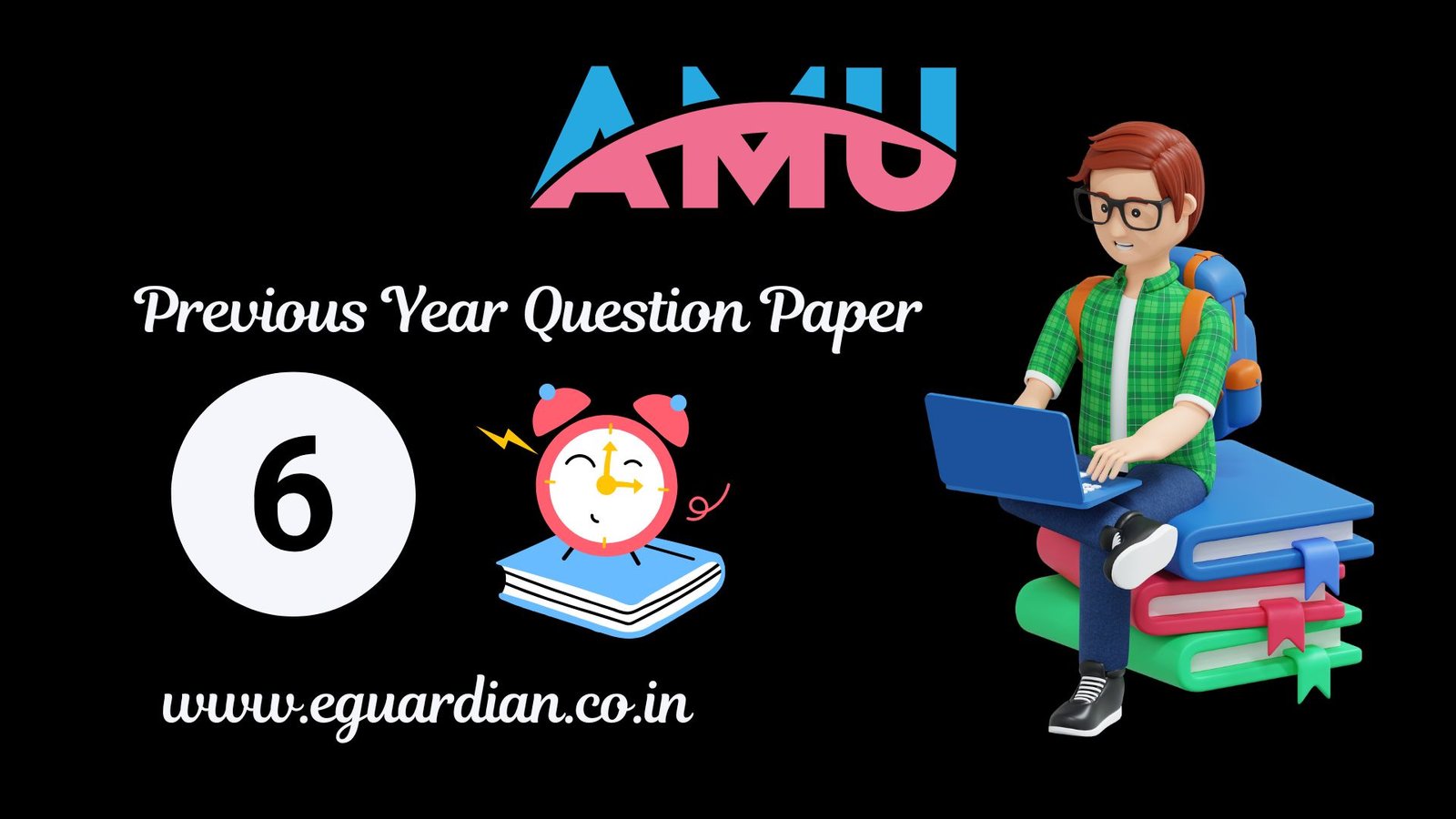Mastering the AMU Class 6 Previous Year Question Paper: Unveiling Insights from the 1993-1994 Session

Introduction
In education, preparing for examinations is a pivotal step toward academic success. For aspiring Aligarh Muslim University (AMU) Class 6 students, the journey toward excellence includes revisiting and mastering the previous year’s question papers.
In this comprehensive guide, we delve into the AMU Class 6 Previous Year Question Paper from the session 1993-1994, offering valuable insights, tips, and strategies to enhance your preparation and boost your performance.
Unearthing the Significance of Previous Year Question Papers
As you embark on your journey to crack the AMU Class 6 examination, the importance of delving into the previous year’s question papers cannot be overstated.
These papers serve as invaluable resources, allowing you to gain a clear understanding of the exam pattern, question types, and distribution of marks. They provide a sneak peek into the minds of examiners, enabling you to tailor your preparation accordingly.
The AMU Class 6 Previous Year Question Paper: Session 1993-1994
Understanding the Syllabus Alignment
To conquer any examination, a thorough comprehension of the syllabus is paramount. The AMU Class 6 syllabus from the session 1993-1994 laid the foundation for the question paper. By meticulously studying the syllabus, candidates can identify key topics, subtopics, and subject areas that are likely to be tested. This strategic approach empowers candidates to allocate their study time effectively.
Analyzing Question Types
The 1993-1994 question paper featured a diverse range of question types, including multiple-choice questions, short-answer questions, and descriptive questions. Our analysis reveals that the examiners sought to evaluate not only the students’ factual knowledge but also their analytical skills, critical thinking, and problem-solving abilities. By recognizing these patterns, candidates can tailor their preparation to develop a well-rounded skill set.
Embracing the Marking Scheme
A meticulous analysis of the marking scheme employed in the 1993-1994 session’s question paper is instrumental in devising a strategic answering strategy. Different questions carried varying weightage, and understanding this distribution allows candidates to prioritize certain sections without compromising on others. This intelligent approach can significantly enhance the chances of scoring higher.
Strategies to Excel in the AMU Class 6 Examination
1. Systematic Time Management:
Time is a precious commodity during any examination. By practicing with the 1993-1994 question paper under timed conditions, candidates can fine-tune their time management skills. Allocating appropriate time to each section while keeping a buffer for revision can prevent last-minute rushes and ensure comprehensive coverage of the paper.
2. Conceptual Clarity and In-depth Knowledge:
The question paper from the session 1993-1994 emphasized the importance of deep-rooted understanding. Rather than rote memorization, candidates were expected to demonstrate a firm grasp of concepts. By focusing on conceptual clarity, candidates can tackle a wide array of questions with confidence and accuracy.
3. Utilizing Model Answers:
Model answers for the 1993-1994 question paper serve as an invaluable resource for candidates. These exemplars showcase the level of detail, accuracy, and presentation expected by the examiners. Incorporating similar traits into one’s answers can elevate the quality of responses and leave a lasting impression on the evaluators.
Participate in the Quiz of AMU Class 6 Previous Year Question Paper : Session: 1993 – 1994
AMU 6th Class Entrance Question Paper with Answers – Quiz
Conclusion
In the pursuit of excellence, mastering the AMU Class 6 Previous Year Question Paper from the session 1993-1994 is a strategic endeavor.
By understanding the syllabus alignment, deciphering question types, and embracing the marking scheme, candidates can refine their preparation and enhance their performance.
With a focus on systematic time management, conceptual clarity, and the utilization of model answers, aspirants can approach the AMU Class 6 examination with confidence and competence.



